We are surrounded by stuff, and all that stuff eventually becomes waste. It’s easy to feel powerless against the constant stream of packaging and disposable products filling our bins and polluting our planet. This linear system of "take, make, waste" is simply not sustainable.
Zero waste management is done by fundamentally redesigning our relationship with resources. It’s a holistic approach that uses the "5 R" hierarchy—Refuse, Reduce, Reuse, Recycle, and Rot—to prevent waste from being created in the first place. The goal is to create a circular system where all materials are seen as valuable resources to be kept in use for as long as possible.
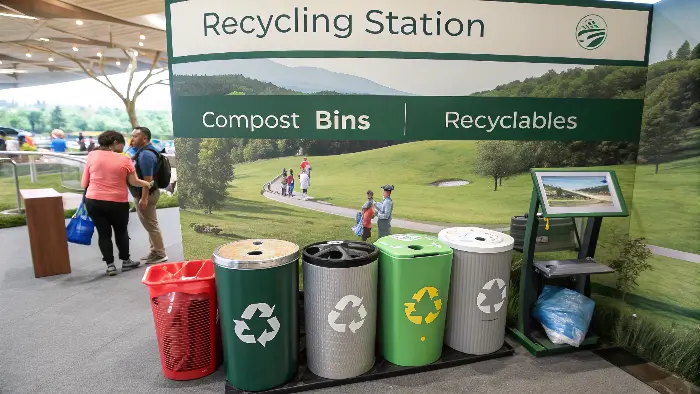
The term "zero waste" can sound extreme and intimidating. It might bring to mind images of someone fitting a year’s worth of trash into a tiny jar. While that’s impressive, it’s not the reality for most people or businesses. Instead, think of zero waste as a guiding star, not a rigid, all-or-nothing destination. It’s a practical set of principles that can be applied anywhere, from your kitchen to a global supply chain.
What is the zero waste technique?
You hear the term "zero waste" and might immediately think it’s just an extreme version of recycling. This is a common misconception that misses the most powerful part of the idea. It’s not about managing trash better; it’s about stopping things from becoming trash in the first place.
The zero waste technique is a design philosophy aimed at preventing waste throughout a product’s entire life cycle. It follows the "5 R’s" hierarchy: Refuse, Reduce, Reuse, Recycle, and Rot (compost). The core idea is to keep resources in a circular loop, either through direct reuse or by ensuring they can return safely to nature or the marketplace.
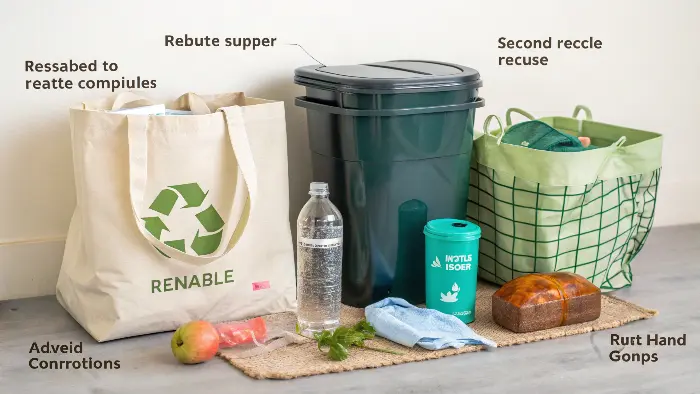
At its heart, the zero waste technique is about shifting from a linear to a circular mindset. Our current economy largely follows a straight line: we take resources from the earth, make products, use them, and then throw them "away." But as we all know, there is no "away." The zero waste approach bends this line into a circle. It’s a form of preventative care for our planet. Instead of just building bigger landfills to treat the symptom, we focus on eliminating the cause of the disease: waste itself.
The Zero Waste International Alliance (ZWIA) defines it as, "The conservation of all resources by means of responsible production, consumption, reuse, and recovery of products, packaging, and materials without burning and with no discharges to land, water, or air that threaten the environment or human health." This is the philosophy that drives us at Ecosourcecn. When we provide a client like Jacky in Canada with a compostable bagasse container, we’re not just selling a box. We are providing a tool designed for the end of its life. It’s designed to fit into the "Rot" part of the hierarchy, returning safely to the soil in an industrial composting facility. This is a perfect example of the zero waste technique in action: designing with the end in mind to close the loop.
What are the 5 steps to achieve zero waste?
The philosophy of zero waste is powerful, but how do you put it into practice? Knowing you should prevent waste is one thing, but knowing how to do it in your busy daily life or business operations is another. It can feel overwhelming if you don’t have a clear roadmap to follow.
The 5 steps to achieve zero waste, in order of importance, are: Refuse what you do not need, Reduce what you do need, Reuse what you consume, Recycle what you cannot refuse, reduce, or reuse, and Rot (compost) the rest. This hierarchy is your guide, focusing your efforts on the most impactful actions first.
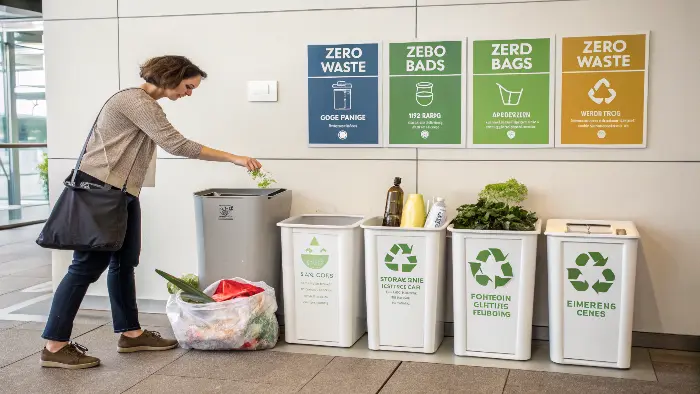
This 5-step hierarchy is the most practical tool you have on your zero waste journey. It helps you make decisions quickly and effectively. Instead of getting bogged down in complex recycling rules for every single item, you start at the top of the list and work your way down. This ensures you’re always aiming for the most sustainable option available. Let’s break down each step.
The 5 R’s Hierarchy
| Step | Action | Examples for a Business or Individual |
|---|---|---|
| 1. Refuse | Say no to things you don’t need. | Declining plastic straws, free promotional items, unnecessary receipts, and single-use bags. |
| 2. Reduce | Use less of what you need. | Buying in bulk, choosing products with minimal packaging, going paperless with bills, conscious purchasing. |
| 3. Reuse | Use items again and again. | Using a reusable coffee cup, water bottle, and lunch container. Repairing equipment instead of replacing it. |
| 4. Recycle | Process materials into new products. | Correctly sorting paper, glass, metal, and accepted plastics for collection. |
| 5. Rot | Let organic matter decompose. | Composting food scraps, coffee grounds, and certified compostable packaging in a home or industrial system. |
Refuse is the most powerful step. Every item you refuse to accept is an item that doesn’t need to be produced, shipped, or disposed of. It sends a direct message to businesses about what you value.
Reduce is about being mindful. Before you buy something, ask, "Do I really need this? Is there an option that uses fewer resources?" For a packaging specialist like Jacky, this means constantly asking if a design can be made smaller or lighter without compromising the product.
Reuse is about shifting from a disposable to a durable mindset. It’s about investing in quality items that last and can be repaired. This step keeps valuable resources in circulation for as long as possible.
Recycle is an important step, but it’s fourth on the list for a reason. It requires significant energy and resources. It’s a good solution for materials like aluminum and glass, but it’s not a perfect solution for everything.
Rot is nature’s recycling program. By composting our organic waste, we turn it back into nutrient-rich soil, closing the loop and avoiding the creation of harmful methane gas in landfills.
What are the steps in going zero waste?
You understand the philosophy and you know the 5 R’s. Now comes the hard part: actually starting. Looking at all the waste you currently produce can be discouraging, and trying to change everything at once is a recipe for burnout. The key is to treat it as a journey, not a race.
Going zero waste is a gradual process. The best first step is to conduct a simple waste audit to see what you’re actually throwing away. From there, you can tackle one area at a time, starting with easy swaps like reusable bags and coffee cups. The goal is consistent progress, not immediate perfection.
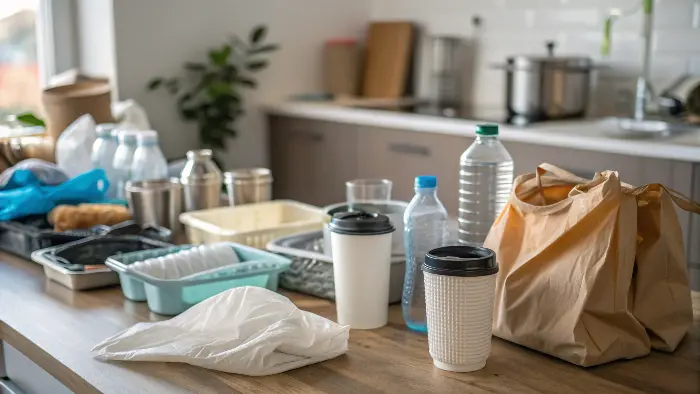
I’ve seen many people and businesses get excited about zero waste, try to do everything perfectly from day one, and then give up a month later because it was too stressful. A much more sustainable approach is to build habits slowly and celebrate the small wins along the way. Here’s a more manageable, step-by-step way to begin.
Step 1: Conduct a Waste Audit. This sounds technical, but it’s simple. For one week, pay attention to what you throw in the trash. Don’t change your habits yet, just observe. At the end of the week, look in the bin. What’s the biggest category of waste? Is it food scraps? Plastic packaging from snacks? Takeout containers? This simple act gives you data and tells you exactly where to focus your efforts for the biggest impact.
Step 2: Pick Your "Easy Wins". Based on your audit, choose one or two things that seem easy to change. If your bin is full of disposable coffee cups, your first step is to get a reusable mug and make a habit of using it. If it’s plastic water bottles, get a reusable bottle. These are the low-hanging fruit. They build momentum and confidence.
Step 3: Tackle One Area at a Time. Instead of trying to make your entire life or business zero waste overnight, focus on one room or process. Start with the kitchen, the bathroom, or your office supplies. Apply the 5 R’s to that specific area. Once you feel comfortable with the changes, move on to the next area. For a business, this might mean starting with office paper waste, then moving to employee lunchroom waste, and finally tackling product packaging.
Step 4: Focus on Progress, Not Perfection. You will forget your reusable bag. You will end up with a plastic straw sometimes. It’s okay. The goal isn’t to be a perfect zero-waster. The goal is to be more conscious and to make better choices more often. Every single time you refuse a plastic bag or compost your coffee grounds, you are making a positive difference.
How can zero waste be achieved?
Making individual changes is a powerful and necessary start. But as you go further on your journey, you’ll notice that you’re often fighting against a system that is designed to create waste. Sometimes, there simply isn’t a plastic-free option available at the store. This is where the scope of zero waste must expand.
Zero waste is ultimately achieved through a combination of individual action and large-scale systemic change. It requires businesses to design products for circularity, governments to implement supportive policies and infrastructure, and consumers to use their purchasing power to demand better alternatives. It’s a collaborative effort where every part of society has a role to play.
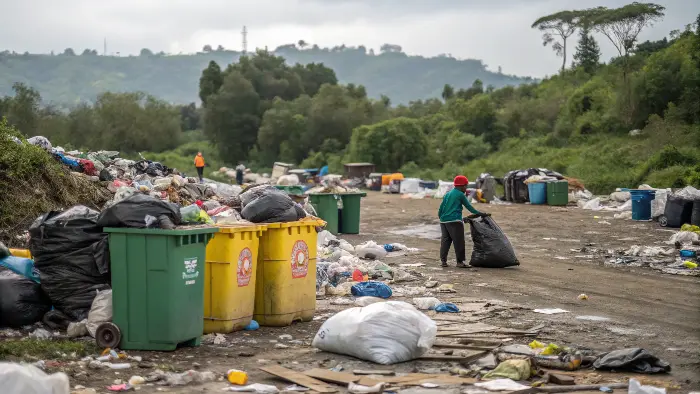
True zero waste cannot be achieved in a vacuum. It requires a supportive ecosystem where the sustainable choice is the easy choice. This ecosystem is built on three pillars.
1. Corporate Responsibility: Businesses are at the heart of the system because they design, produce, and sell the products we use. The biggest leaps toward zero waste happen when companies embrace circular design. This means creating products that are durable, repairable, and made from materials that can be easily recycled or composted. This is our mission at Ecosourcecn. We provide businesses with the tools—like certified compostable tableware and FSC-certified paper goods—they need to be part of the solution. Policies like Extended Producer Responsibility (EPR), where companies are financially responsible for the end-of-life of their products, are also powerful drivers of this change.
2. Government and Infrastructure: Governments set the rules of the game. They can ban the most harmful single-use plastics, standardize recycling labels to avoid confusion, and invest in the critical infrastructure needed to handle organic waste. Without city-wide composting programs, for example, even the most dedicated citizen or business can’t properly dispose of food scraps or compostable packaging. Government action creates the foundation upon which individual and corporate efforts can succeed.
3. Consumer Action and Demand: Never underestimate your power as a consumer. Every purchase you make sends a signal to the market. When millions of people start bringing their own bags, stores stop offering plastic ones. When clients like Jacky demand certified, sustainable packaging for their brands, it creates a business case for suppliers like us to innovate and grow. Your individual actions, when multiplied, create the demand that pulls the entire system toward a more sustainable model. It’s a powerful feedback loop: your choices influence businesses, which encourages better government policy, which in turn makes it even easier for you to live a zero waste lifestyle.
Conclusion
Zero waste management is not an impossible ideal; it’s a practical roadmap for a better future. It’s about making conscious choices, guided by the 5 R’s, to systematically reduce our impact. It’s a journey that starts with a single step and builds towards a truly circular economy.


